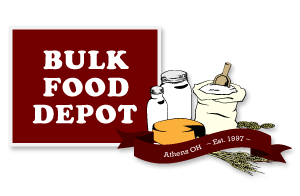Anyone can make this beginner sourdough starter recipe at home. All you need is flour, water, and a little bit of patience.
Mixing it takes 5 minutes. The overall process takes about 7 days from start to finish. Before you know it, you’ll have your very own bubbly, active starter ready to make incredible sourdough bread.
Once the starter is finished. You start baking right away, or you can put the jar in the fridge until you want to use it for baking.
Don’t forget to keep feeding it
Keep feeding it with a few tablespoons of whole wheat flour and a few spoons of water once a week.
Tip! If you need an active starter, you can ask Danielle for one.
Day 1: START IT
Starter ingredients:
1⁄2 cups unbleached flour (e.g. whole wheat flour)
1⁄4 cup water
Method:
Mix the flour and water in a jar until smooth.
Cover loosely with plastic wrap, a small cloth, or the lid of the jar and let it rest in a warm spot, about 75-80 degrees for 24 hours.
Day 2-3: CHECK ON IT
Check your starter:
Check if any bubbles have appeared on the surface. Bubbles indicate fermentation, which is what you want!
Stir in the morning and evening. You may leave the jar open for a few hours during the day to get some air and natural bacteria that help start all the spores.
Day 3-4: FEED IT
Feed your starter:
1⁄2 cups unbleached flour (e.g. whole wheat flour)
1⁄4 cup water
Method:
Mix the flour and water in a jar until smooth.
You may leave the jar open for a few hours during the day to get some air and natural bacteria that help start all the spores.
Day 4, 5, 6: KEEP FEEDING
Keep feeding your starter as you did day 3-4:
As the yeast begins to develop, your starter will rise, and bubbles will form on the surface and throughout the culture. When the starter falls, it’s time to feed it again.
Day 7: YOUR STARTER IS READY!
By now, your sourdough starter should have doubled in size. You should see plenty of bubbles, both large and small. The texture will now be spongy, fluffy. It should also smell pleasant.
Your starter is ready when it shows all of the following signs:
bulk growth to about double in size
small and large bubbles on the surface and throughout the culture
spongy or fluffy texture
pleasant aroma
If these conditions are met, your starter is now active. Either you start baking right away. Or you can put it in a clean jar in the fridge until you want to use it for baking.
Wondering if your starter is ready to use? Do the float test: Drop a teaspoon of bubbly starter in a jar of water; if it floats to the top you can use it.
STORAGE OPTIONS
Once your starter is established, you have two storage options to consider.
At room temperature: If you bake a few times a week—store your starter at room temperature. This will speed up fermentation, making the starter bubbly, active, and ready to use faster. Feed the starter once or twice a day.
In the fridge: If you don’t bake that often, you can store your starter in the fridge, loosely covered or with a lid. You’ll only need to feed it about once a week or so, to maintain its strength when not in use. When you are ready to make dough, feed your starter at room temperature as needed, to wake it back up.

